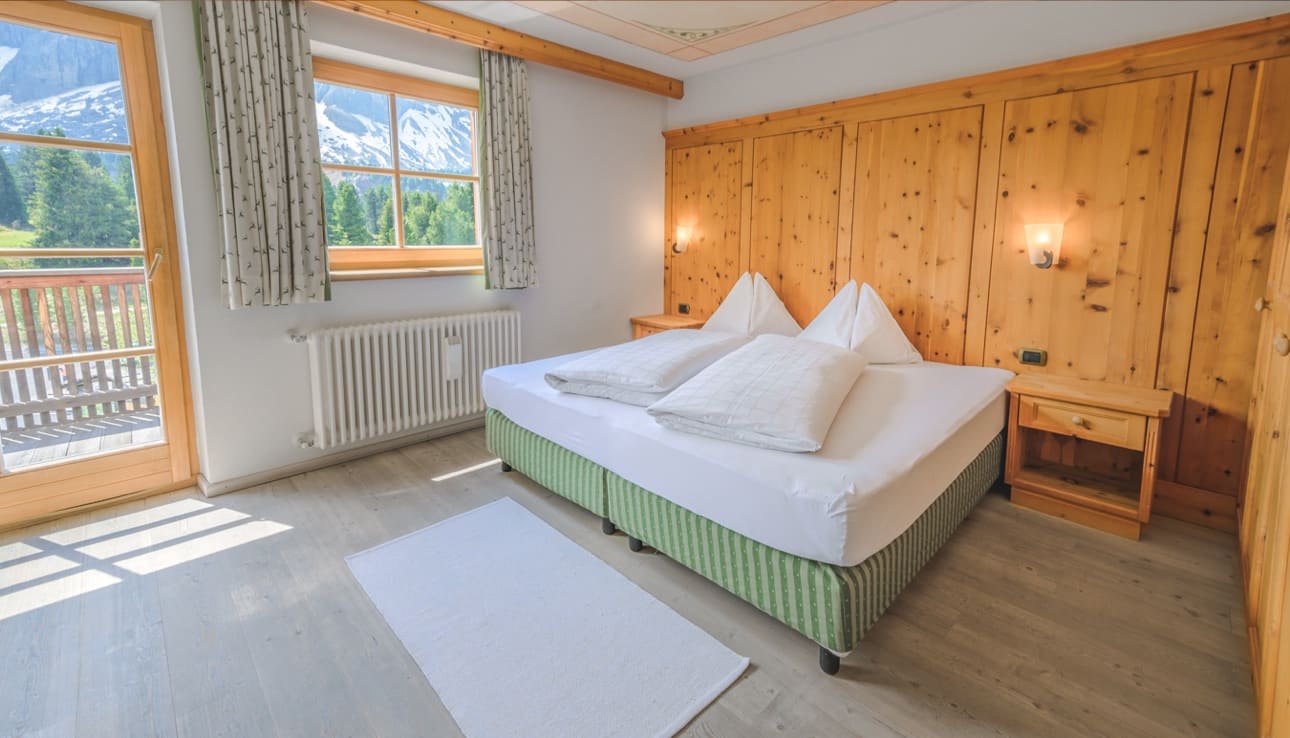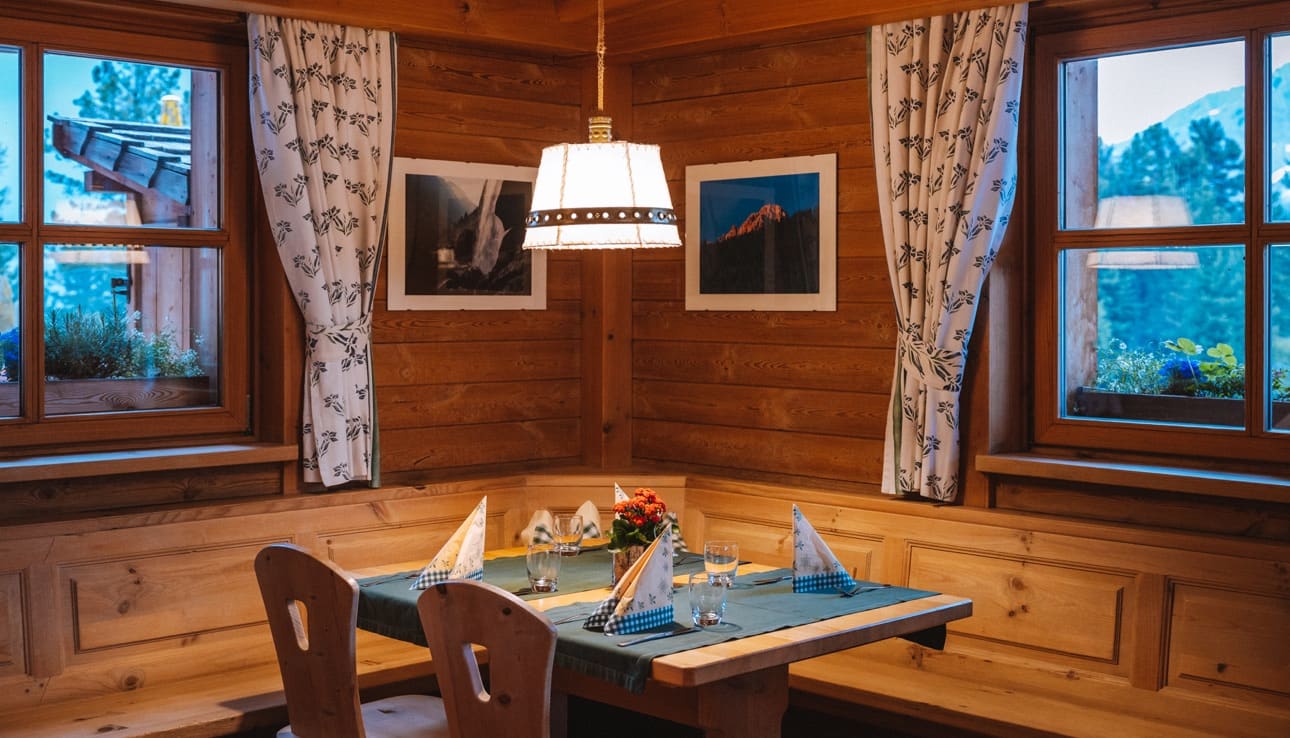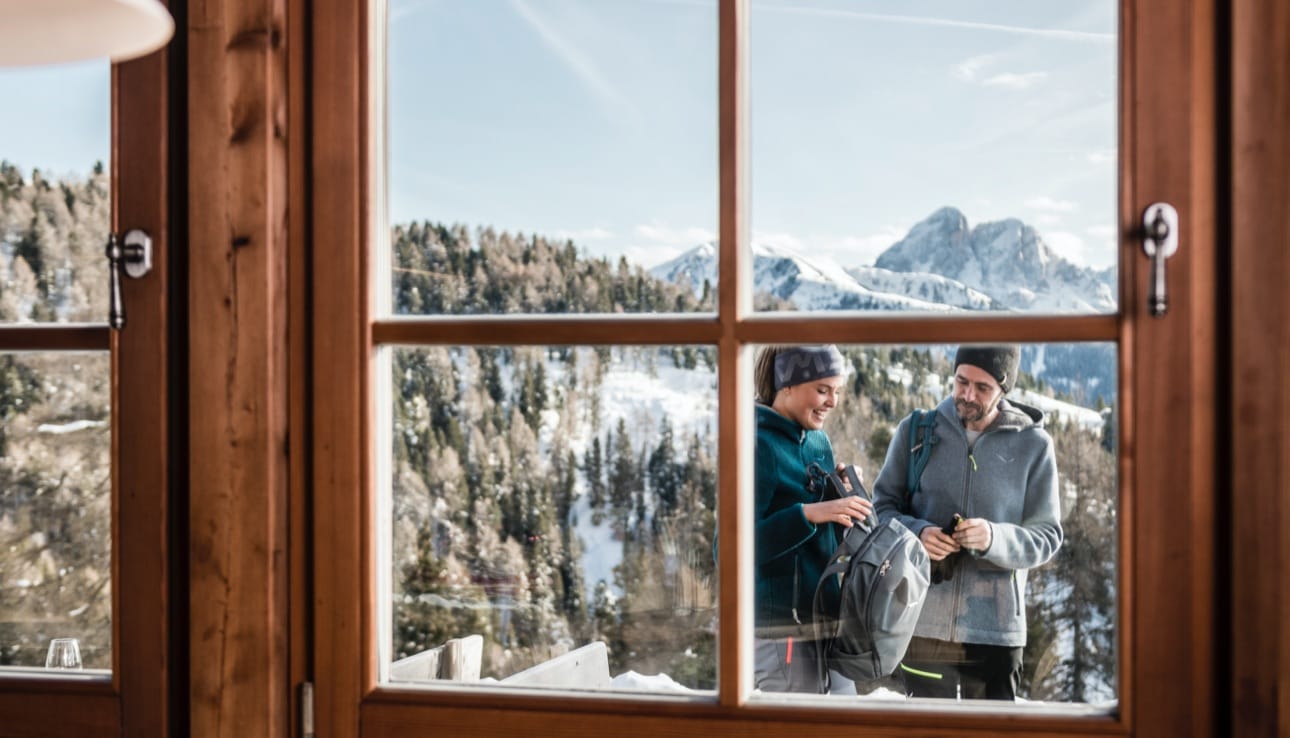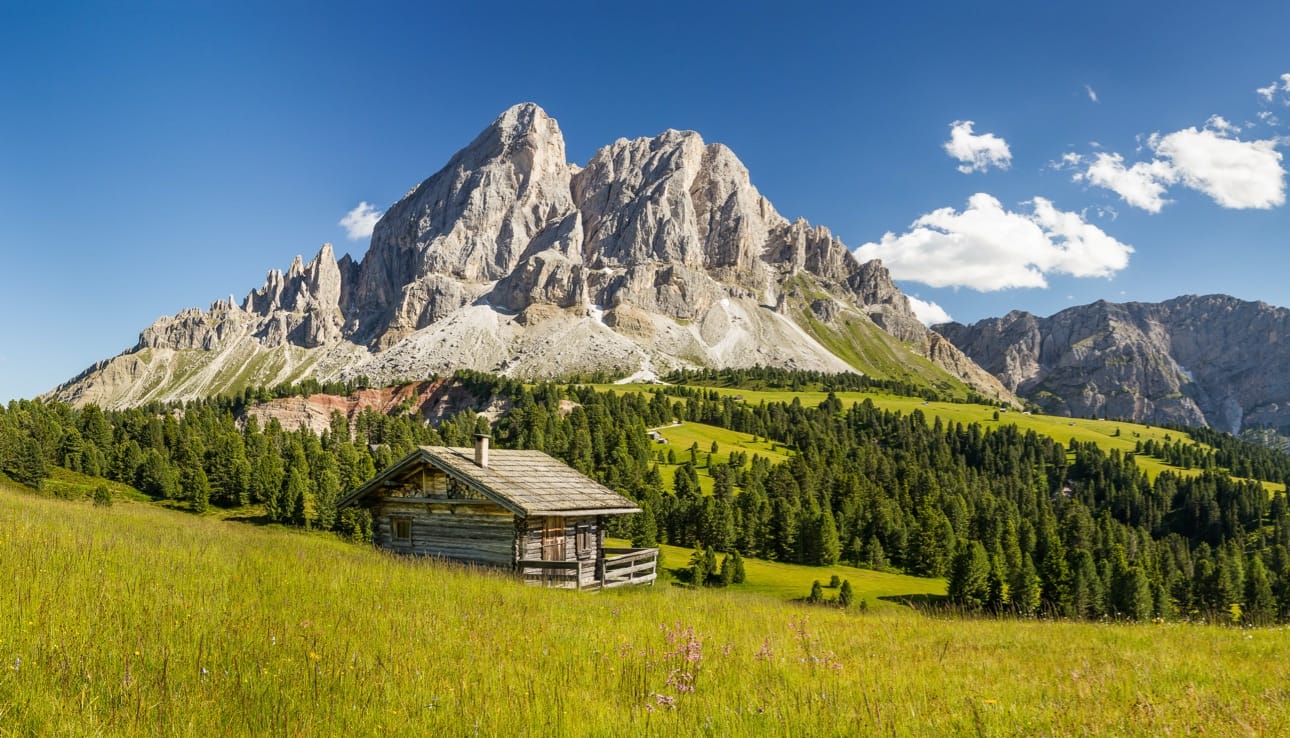The Dolomites of Val BadiaA world of endless outdoor possibilities
Enter a natural paradise, where everything you see can be discovered by walking, hiking, climbing or biking. A world of endless outdoor possibilities, surrounded by what have been called the world's most beautiful mountains. The pale mountains, as the Dolomites are called in the local legends, strike with their exceptional beauty: sharp peaks of pale rock resembling towers, castles and cathedrals, raise up to the sky from the gentle meadows and hilly woods of Val Badia valley. At dusk, their pale grey visage turns to bright shades of orange, red and pink, a one-of-a-kind natural display called "enrosadira" (alpenglow) in the local Ladin language.
Explore the Dolomites by following the High Routes, a network of 10 long-distance alpine trails that cross them from north to south, from west to east. Two of them (Dolomites High Routes 1 and 2) pass through Val Badia and Alta Badia. But guess what? They both pass right next to our two facilities: The High Route 1 can be easily accessed from Camping Sass Dlacia, while the Ütia de Börz mountain inn is one of main entry points to the High Route 2. As an alternative, you can reach these unique peaks through one of the countless climbing trails ascending them. Or you can hop on your mountain bike and do the Sella Ronda, circling around the Sella group and visiting all the four Ladin valleys surrounding it, or simply make your own personal itinerary.
In 2009, the Dolomites were declared a UNESCO World Heritage Site, meaning that they are officially recognized as a natural scenario worth of special recognition and conservation. The reason behind the listing lies in the exceptional beauty of the rock formations and their natural context, as well as in their unique geological and geomorphological significance. This meant that protection of this natural landscape is no longer just a local matter, but a concern and duty of mankind as a whole.
The areas inscribed on the UNESCO list are 9 separate mountain ranges, scattered over the whole Dolomites region. Some of them lie in South Tyrol, as the local Nature Parks of Fanes - Sennes - Prags and Puez - Geisler, while others rest in the Trentino, Veneto or Friuli Venezia Giulia regions.
The Dolomites owe their characteristic pale colours and unexpected shapes to the geological history of the region and the particular natural process which created them. 250 million years ago, the whole area lied underwater, as part of the prehistoric Thetis Ocean. The Dolomites themselves where huge coral reefs created by millions of years of natural marine sediments piling up. Eventually, the collision of the African and European tectonic plates pushed the Alps, and the Dolomites with them, above sea level, at first as tiny atolls, then as small islands, until they became the huge mountains we know today.
The geological importance of these particular mountains was discovered at the end of the 18th Century. Déodat de Dolomieu was the first geologist to describe them in a scientific paper. This was the moment the Dolomites got their name as well.















